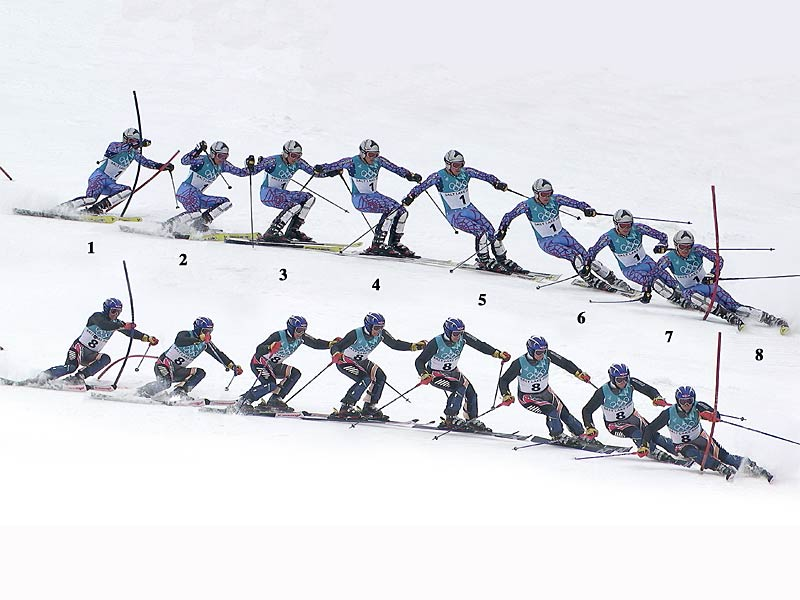synchronizing the movement of the legs and torso
Anticipation is an old and well-proven way to implement a ski turn. It is another, different in time, turn of the skier’s head and torso, as opposed to the turn made by legs and skis. This non-simultaneity gives significant possibilities to perform some compensation of stress and instability at the moment chosen by the skier , i.e. when it is the most favorable for his turning technique.
The classic way is to anticipate the torso in relation to the skis. The turn is first initiated by the head and torso, while the skis continue the previous turn. It causes a sort of running-out of the compact head-torso system with the leg-ski system. The skier, as far as his skills, allows as much as he can, in the second phase of turning both these systems bring together dynamically. The “stretching” mechanism gives the skier an advantage at the moment of “pulling”, in which bringing the two systems together gives the opportunity to relieve the edge (less pressure on the snow). This way of overtaking has another very important advantage. It gives the possibility to start turning in such a way that it can push back (hit the edges) still in the upper part of the turn / see chapter – Gravitational analysis of the driving path /. There is also another advantage of classic overtaking – the head-torso system is the basic carrier of mass, and thus the inertia of the skier. Pointing him in the right direction at the beginning of the turn gives the skier more control over the situation.
The second, much more atypical and unusual way of realizing the independent movement of the head-torso and leg-ski systems is the ride of the American skier Bode Miller. He starts turning with skis and legs to catch up with his torso in the second phase. “Pulling” the front-leg ski system with the head-torso system temporarily remaining behind, also gives great opportunities for unloading the skis in the 2nd phase, but implemented as if from the other side. Both techniques lead to the same balanced position between turns. Ron LeMaster showed it very well in the famous photo in the article – “Bode’s Big Secret” published in SKI Magazine (3-4 / 2003). The photo shows the turn of Bode Miller and Kjetil Andre Aamodt between the same gates. In positions 1 and 8, both competitors ride (look) almost identical, but in between, they make a turn with a significantly different technique.

Classic anticipation (K. A. Aamodt) allows you to control a rapidly changing situation. The head follows the path, which together with the arms first directs (throws) towards the new turn. Skis start the turn a moment later.
Deviation (B. Miller) is an aggressive and very risky way of riding, because returning to a balanced position can be difficult. Characteristic for this style is the edging at the end of the turn so that the skis get caught on the snow and “wait” for the torso. Huge agility and strength of thigh and abdominal muscles are also necessary.